Most of us wake up at 7 AM in the morning, force ourselves to hit the gym in vain, gobble a bowl of masala oats, gulp down a glass of ‘real’ juice and throw ourselves into the corporate world, already exhausted. No wonder then that lifestyle disorders like diabetes, blood pressure and PCOD are menacing our lives. So, Should we quit our jobs and stay at home, you ask? Not really. A 45-minute session of certain yoga postures, five days a week, can do wonders to your body. Priya Chaphekar suggests yoga poses to keep lifestyle disorders at bay.
For a moment, go back to your schooldays and think about all the medical reasons for which you didn’t attend school; it was either because you were down with viral infections like flu, chicken pox, mumps or because you just wanted an excuse to stay at home. Now think about all the reasons why your mother took leave; it was because you were too distracted during exam time, there were relatives over or she was too sick of the travel.
Our medical reasons have changed dramatically in the past two decades. Toddlers have started wearing glasses–thanks to Candy Crush and a zillion other apps, one in five women are affected by PCOS, more than 75 million people in the country are suffering from lifestyle disorders like diabetes, and arthritis affects more than 15 per cent of the population. “Instead of playing outdoors, children are glued to tabs and iPads. This is an open invitation to all kinds of physical and behavioural woes such as text neck, stiff joints, improper functioning of the brain, hampered cognitive thinking and declarative memory and inability to concentrate, among others,” says Mumbai-based yoga instructor Aniket Rahalkar.
In case you are beginning to lose hope already, don’t! Try a 45-minute session of daily yoga instead.
Diabetes
Health experts, who have studied a number of people suffering from diabetes, recommend yoga postures like Balasana (child’s pose) and Sarvangasana (shoulder stand) to keep the body and mind healthy. The point is to activate organs like the liver and pancreas to regulate and manage high blood sugar levels. Yoga will not only stimulate the production of insulin, but also treat diabetes. Postures which involve a lot of twisting help a great deal for diabetics. “Specific asanas like Bakasana (sitting crane), Vakrasana (spinal twist pose) and Halasana (plough pose) massage and tone the abdominal organs like pancreas and liver and in controlling diabetes. A good yogic regimen will enhance the secretions of the endocrinal glands which help insulin in the body to be used more effectively,” highlights Pune-based yoga practitioner Janhavi Bhise.
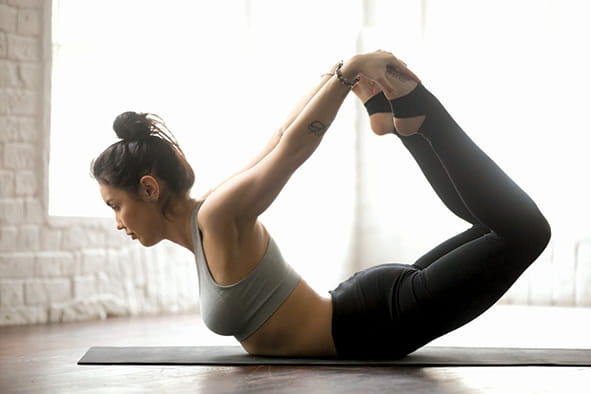
Key yoga practices for diabetes
Dhanurasana or Bow Pose
• Lie down on your stomach, forehead touching
the floor, legs together and hands by the side of
the body.
• Fold the knees, bringing the knees together and the heels close to the buttocks.
• Raising the head, keep the chin on the floor.
• Hold the ankles with hands and start taking the legs backward so there’s a tug-of-war between the hands and the legs.
• In this process, the upper and lower portions of the body are automatically raised.
• Raise the body in such a manner that the entire weight of the body is on the curved navel region.
• Maintain normal breathing in the final stage.
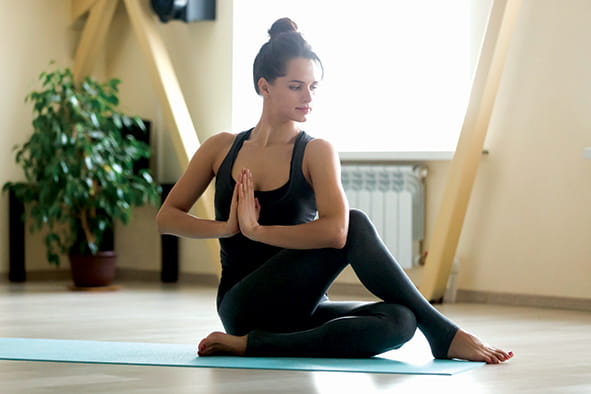
Vakrasana or Half Spinal Twist Pose
• Keep the knees together with legs straight and bring the palms beside the body, pointing forward.
• Now, fold the right leg and place the foot beside the left knee.
• Twist the torso and bring the left shoulder towards the folded right knee. Turning further towards the right, lock the right knee in the left armpit. For this, take support of the right hand.
• Now, place the right hand behind the body with fingers pointing in the backward direction.
• Holding the right leg firmly, keep the left palm on the floor near the right sole.
• Turn the neck and the face to the right, twisting
the neck as much as is comfortably possible in the final position.
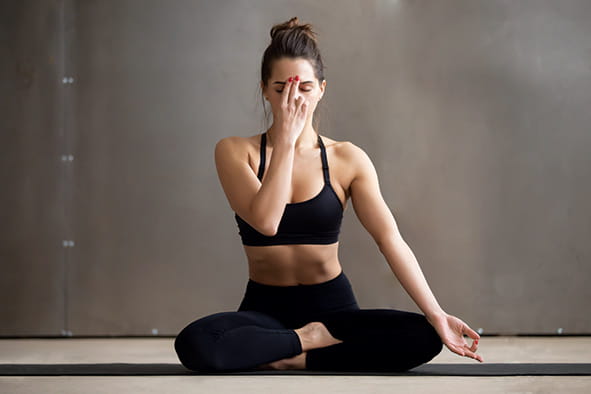
Anulom-Vilom Pranayama
• Sit in any meditative posture keeping the palms on the knees in Drona Mudra.
• Close the right nostril with the right thumb and completely exhale with the left nostril.
• Breathe in through the left nostril and close it with the other four fingers.
• Now, breathe out through the right nostril, pause and breathe in through the right nostril and close it with the right thumb.
• Breathe out through the left nostril. This will complete one round of Anulom-Vilom Pranayama.
besity
Cultural asanas can be categorised into forward bending, backward bending, sideward bending, twisting, vertically stretching, topsy turvey and balancing. Most of these asanas strengthen the spine, reduce belly fat and increase flexibility. “At the initial stage it’s a good idea to consult a seasoned yoga expert who’ll prescribe a list of specific and dynamic asanas to melt fat around specific body parts. Additionally, you can also take help from a naturopathy practitioner and work out a proper diet plan,” shares Janhavi.
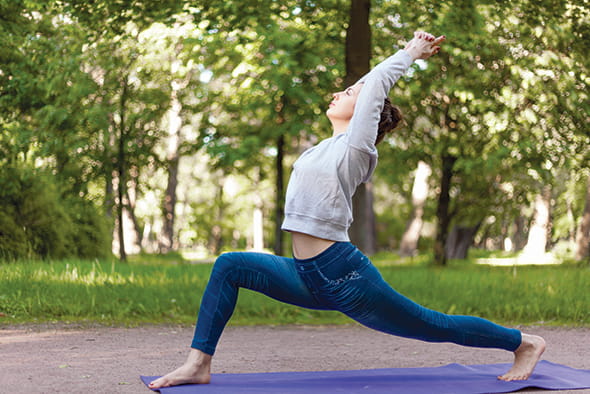
Key yoga postures for weight loss
Surya Namaskar
A sequence of 12 yoga postures, these sun salutations are perfect for days when you need to rush or you’re too bored to get on the treadmill. When done dynamically, they are a good cardiovascular workout, and when done slowly, they tone the muscles. Including them in your early morning fitness routine will loosen stiff muscles and work on the entire body. What’s more, one round of Surya Namaskar burns upto 13.90 calories. That’s some motivation, innit?
Naukasana or Boat Pose
• Keep the legs together and hands by the side of the body.
• Next, raise the legs and the body from waist upwards simultaneously.
• Keep the hands parallel to the floor and at the level of the shoulders.
• Maintain this final posture for five breaths.
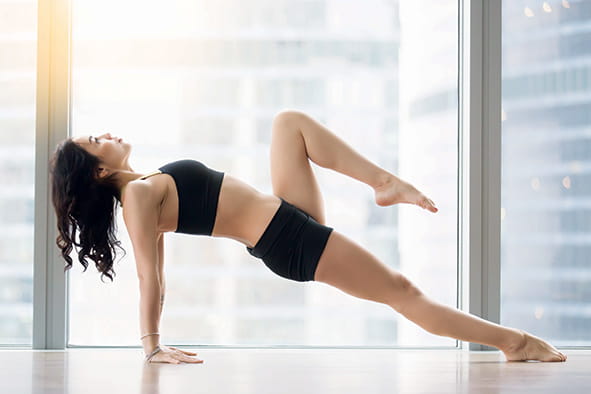
Purvottanasana or Upward Plank
• Sit up with the legs together in front of you, keeping the feet together and the spine erect.
• Place the palms on the floor at shoulder level, fingers pointing in the backward direction.
• Keep the arms straight.
• Lean back and support the weight of your body with your hands.
• Raise the pelvis up while breathing in.
• Keep the whole body straight in the process.
• Keep the knees straight and press the soles flat to the floor.
• Let the head fall back towards the floor.
• Hold the pose and continue normal breathing in the final position.
• Lower down the pelvis and relax.
Yoga and Mental Health
Yoga is undoubtedly the most effective tool for managing the rising mental health issues in India. “Lifestyle disorders are nothing but mental problems manifesting on the physical level. The thoughts, patterns, moods and attitudes that a mind harbours influence the internal environment of the body at the physical level. When you’re anxious, you sweat, when you’re afraid, you get cold feet. If mental disorders are taken care of, we will automatically begin to feel happy and healthy,” points out Aniket.
Key yoga practices to relieve stress
Breath Awareness
Breathing naturally and spontaneously, we simply observe each incoming and outgoing breath closely. Without altering the pattern of breathing, we watch how the breath enters the body, where it goes, how deep or shallow it is, how fast or slowly it flows, how it reverses its path and leaves the body, what sensations it creates as it flows in and out, what happens to the energy levels in the body and what goes on inside the mind simultaneously as awareness of the breath continues.
This practice directs the normally extroverted mind to turn inward and become attentive to what is happening inside.
Dissolving Tension with Pranayama
Many people who are going through the distress of illness don’t breathe very effectively. There is no life without prana or the vital force. Our breathing process is closely related to the rhythms of our physical, mental and emotional life. While obtaining control over breathing through pranayama is a subtle yet immensely beneficial process, it can also be dangerous if not done properly.
The eight types of Pranayama that are usually practised are are: Surya Bhedan (right nostril breathing), Ujjayi (ocean breath), Sitkari and Sheetali (cooling pranayamas), Bhastrika (bellow breathing), Bhramari (bee breathing).
Yoga Nidra: The Silent Healer
Simply described as effortless relaxation, yoga nidra is an essential end to any yoga pose sequence. Yoga postures ‘warm up’ the body; yoga nidra ‘cools it down’. In this progressive relaxation practice, the relaxation gradually deepens from the muscular level to the mental, emotional and deep psychic levels, enabling the practitioner to enter and explore the deeper layers of the mind one by one.
Yoga Nidra or Shavasana undoes the tension and stress that is so detrimental to the immune system. They calm the nerves, lower heart rate and blood pressure and dissolve physical and mental tension and improve concentration and sleep. When regularly practised, they alleviate the stress and anxiety that depress immune function.


